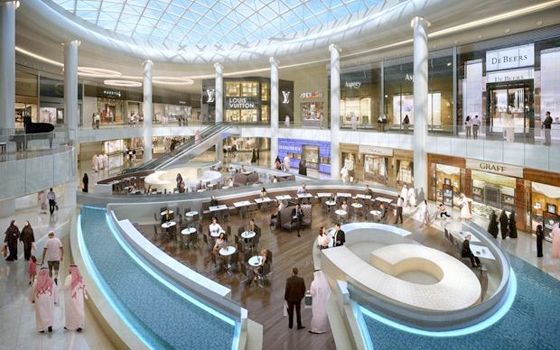Competition is set to heat up for high-end retail space in Abu Dhabi in the coming years as an expanding and affluent population, solid economic growth and increasing tourism drive retail activity.
Growth in the emirate’s retail sector is forecast to remain solid in the medium to long term, as Abu Dhabi’s population could expand from its present level of 1.5m to as much as 5m by 2030, according to estimations set out in the emirate’s Economic Vision 2030 plan. This increase, combined with a rise in tourism arrivals, will feed demand for new retail space.
But as more malls open in the coming years, growing competition will see players pushed to diversify – and in some cases reassess – their retail mix. High-grossing food and beverage outlets are likely to expand, but as some new malls are continuing to target the top end of the market, others may need to shift towards the lower-middle income segment, where there are more potential customers.
Low vacancy rates
The opening of Yas Mall in late 2014, the second largest shopping center in the UAE after The Dubai Mall, added 235,000 sq metres to Abu Dhabi’s retail stock. Other smaller releases in the final quarter of 2014 added a further 100,000 sq meters, taking the total to around 2.5m sq meters of gross leasable area (GLA).
Even with these new releases at the end of last year, vacancy rates remain low at 2% of available GLA, the same level at the close of 2013, according to real estate consultancy JLL, in a report published in late January. By comparison, there was a 25% vacancy rate for office space at the end of the fourth quarter of 2014, the report said, underscoring the ongoing demand for retail space in the emirate.
A relatively limited supply of prime retail space could also translate into higher rental costs, especially in higher-profile developments, according to property firm CBRE.
Steady flow of new developments
At present, Abu Dhabi’s retail property pipeline is not overly congested, with estimates putting new GLA scheduled to come onto the market this year at 128,000 sq meters, with a further 95,000 to be released in 2016, according to JLL.
The next major retailing development set to hit the market, the 186,000-sq-metre Reem Mall to be built on Al Reem Island, is still in the design stage and not due to be completed until 2018. The mall, with 450 stores and 85 food and beverage outlets, has a budget of $1bn and will be a cornerstone of a larger urban development project intended to serve 200,000 residents.
Including the Reem development, it is estimated that 450,000 sq meters of GLA will be added to Abu Dhabi’s retail floor space over the next few years, with the bulk of this coming after 2016.
The release of new high-end retail space onto the market will likely put pressure on some of Abu Dhabi’s older malls and shopping centers to maintain their profile in the face of increased competition. This pressure could see some established malls lower rental tariffs or seek to lock in key retailers on longer-term agreements to halt any drift to new developments.
Retail may be immune to oil decline
While the falling price of oil on world markets may curb government revenue and see economic growth shift down a notch, it is not expected to have a significant impact on retail activity. State spending is forecast to remain steady, underpinning economic expansion. In mid-February, ratings agency Standard & Poor’s affirmed Abu Dhabi’s double-A credit assessment, saying the emirate’s strong fiscal position would act as a buffer to the impact of lower energy prices, even despite expectations that the budget would run a deficit this year.
Although the IMF in late January lowered its forecast for the UAE’s growth in 2015, cutting its projection by 1.0 percentage point to 3.5%, and reassessed Abu Dhabi’s GDP expansion at 3%, it said the emirate’s non-oil segment should fare far better, forecasting a 5.5% increase for this year and the next.
Oxford Business Group
23 March






















































